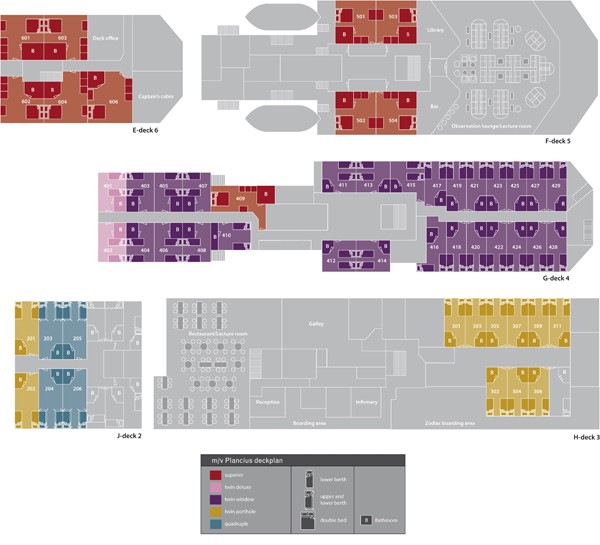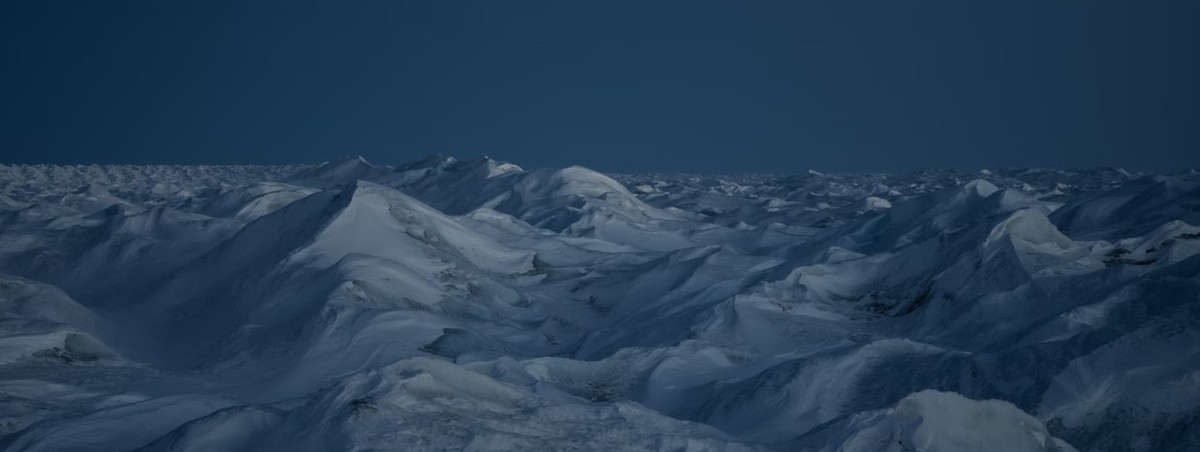
Southeast Greenland offers many historic sites relating to ancient Thule, Norse, and Moravian culture while also allowing us to walk in the footsteps of famed polar explorers like Fridtjof Nansen. Glaciers, icebergs, and fjords make for a dazzling environment where we may see polar bears, and the crossing to Iceland will give us a great opportunity to observe migrating whales and seabirds.
- Experience history, dazzling glaciers, and search for polar bears in aurora-lit southeast Greenland
Prices quoted here are often dependent on currency fluctuations. Please check with (01432 507450 or info@small-cruise-ships.com) for the very latest price, which may well be cheaper than the one advertised here.
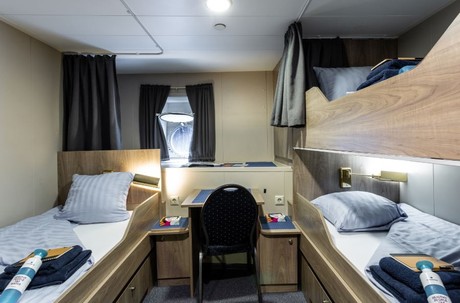
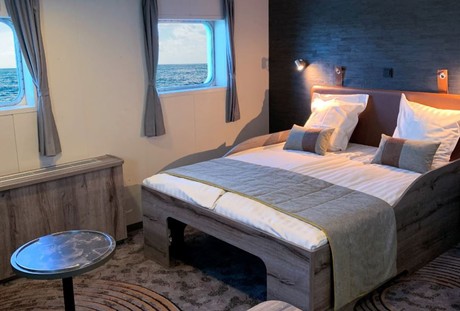
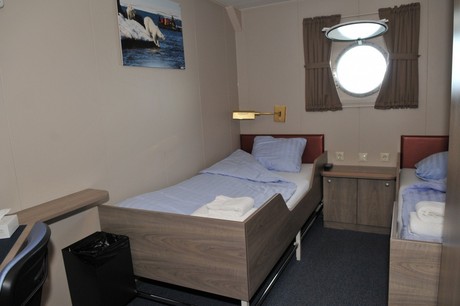
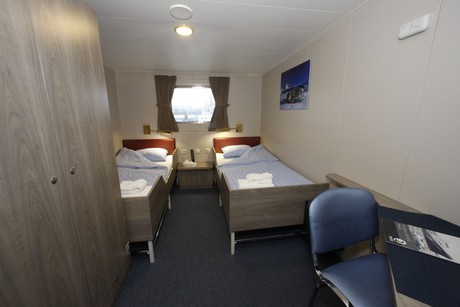


We arrive by plane at Narsarsuaq and board the ship, preparing to start our Greenland adventure. In the evening we visit Bratthalid, where Erik the Red lived about a thousand years ago.
Today we reach Lichtenau, a lovely though nearly deserted Greenlandic village, where the Herrnhuters had a mission in the 18th century and where some of their large German-style buildings still remain. We will then try to get to Uunartoq, where we can bathe in a large hot spring surrounded by icebergs. Across at Vagar, we find the remains of a Norse homestead.
Our eastward passing of Prins Christian Sund is surrounded by mountains of over 1,000 meters (3,300 feet) and is one of the highlights of the voyage. We will try to make a landing at the small village of Augpilaqtoq, where we can still meet some hunters of the area. As an alternative, we may make a landing at Svaerdfiskens Havn.
Sailing northward in the East Greenland Current, we aim for Igutsait Fjord or Napassorsuaq Fjord. Both feature glacier fronts and small icebergs, where an isolated population of polar bears was once found hunting seals.
Today we land at Tingmiarmit, seeing an abandoned Greenlandic settlement and remains of Thule houses at the north side of the island. Deep into the Tingmiarmiut Fjord, we are again in the area where polar bears hunt seals among the drifting glacier ice.
Next we visit Skjoldungen, one of the most spectacular fjords of southeast Greenland. Our aim is to land at Qornoq, where we’ll see houses from the Thule culture, then visit Mariedal and a beautiful valley where Greenlanders used to collect berries in autumn.
We sail to today’s landing at Umivik, where the explorer Fridtjof Nansen ascended the Greenland ice sheet. Here you may even be able to walk a short distance in his steps.
As we sail in Denmark Strait on our way to Iceland, the going can be rough. But be sure to spend some time on deck looking for migrating whales, seabirds, and the magical lightshow of the aurora borealis.
We return from our adventure with memories that will last a lifetime, arriving at the Icelandic port town of Keflavik.
All itineraries are for guidance only. Programs may vary depending on ice, weather, and wildlife conditions. Landings are subject to site availabilities, permissions, and environmental concerns per AECO regulations. Official sailing plans and landing slots are scheduled with AECO prior to the start of the season, but the expedition leader determines the final plan. Flexibility is paramount for expedition cruises. The average cruising speed of our vessel is 10.5 knots.
Plancius
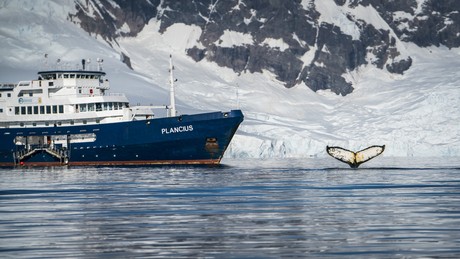
| Length | 89 metres |
|---|---|
| Speed | 10-12 knots |
| Crew | 37 |
| Expedition staff | 8 |
| Doctor | 1 on board |
M/V "Plancius" was built in 1976 as an oceanographic research vessel for the Royal Dutch Navy and was named "Hr. Ms. Tydeman". The ship sailed for the Dutch Navy until June 2004 when she was converted into an expedition cruise ship..The vessel was completely rebuilt as a 114-passenger vessel in 2009 and complies with the latest SOLAS-regulations (Safety Of Life At Sea). M/v "Plancius" is classed by Lloyd's Register in London and flies the Dutch flag.
"Plancius" accommodates 114 passengers in 53 passenger cabins with private toilet and shower in 4 quadruple private cabins, 39 twin private cabins (ca. 15 square meters) and 10 twin superior cabins (ca. 21 square meters).All cabins offer lower berths (either two single beds or one queen-size bed), except for the 4 quadruple cabins (for 4 persons in 2x upper and lower beds).The vessel offers a restaurant/lecture room on deck 3 and a spacious observation lounge (with bar) on deck 5 with large windows, offering full panorama view.
Plancius has large open deck spaces (with full walk-around possibilities on deck 3), giving excellent opportunities to enjoy the scenery and wildlife. She is furthermore equipped with 10 Mark V zodiacs, including 40 HP 4-stroke outboard engines and 2 gangways on the starboard side, guaranteeing a swift zodiac operation.M/v "Plancius" is comfortable and nicely decorated, but is not a luxury vessel. Our voyages in the Arctic and Antarctic regions are and will still be primarily defined by an exploratory educational travel programme, spending as much time ashore as possible.
The vessel is equipped with a diesel-electric propulsion system which reduces the noise and vibration of the engines considerably. The 3 diesel engines generate 1.230 horse-power each, giving the vessel a speed of 10 - 12 knots. The vessel is ice-strengthened and was specially built for oceanographic voyages.M/v "Plancius" is manned by 17 nautical crew, 19 hotel staff (6 chefs, 1 hotel manager, 1 steward-barman and 11 stewards / cabin cleaners), 8 expedition staff (1 expedition leader and 7 guides-lecturers) and 1 doctor.
Ice class: Plancius was built for Ice conditions. To reach these ice-conditions she has a strengthened bow and stern. The hull is thicker and the whole construction on the waterline of the vessel is reinforced by using extra frames. Where the normal frame spacing is 65cm, we have on the bow-line and stern also frames in between so there the frame spacing is approx 30cm. Because Plancius was built to do surveys she has a special six blade bronze propeller, the shape of the propeller makes Plancius a very silent ship. Plancius has a Lloyds class notation 100A1 Passenger ship, Ice Class 1D at a draught of 5 meters (which is our waterline).Vessel Type: Expedition
